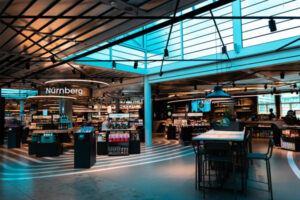By Sheila King
The international expansion of these retailers focused initially on retail destinations in big-city urban environments. The attraction of these locations includes market scale, great connectivity, diversity and vitality, and world class culture and heritage. All of these factors attract residents, workers, and tourists and thus give the premium retailers the broad range of customer they require.
Turning to the specific requirements of the premium retailers, it is not only consumers who have adopted a more considered outlook. These retailers are also carefully scrutinizing their store locations. It is a major investment to open a flagship store and major cities and shopping destinations are competing on a global level to attract retailers. There has to be something exceptional about the destination and a critical mass of these premium retailers clustered together.
Additionally, these retailers can no longer depend upon their stores being the main touch point for the consumer. The successful premium retailers are those that have a clear strategy and embrace the myriad of opportunities presented by the merging of the physical and multi-channel worlds. Some key considerations for the property industry are: Retailers are in search of a greater understanding of new markets and require more insight on the performance of shopping centers; technology is influencing a change towards fewer stores; the merchandising mix is changing as different sectors expand or contract; there is a greater demand for unique and creative environments; lease models are changing and becoming outdated; successful retailers are creating unique experiences and telling a story to the customer.
These retailers are therefore quite specific about their requirements before making any commitments. A scheme that focuses on producing new concepts, exciting environments, and a tenant mix complementary to the brand will entice and attract the discerning retailer. The continuing success of Ted Baker is a prime example. They have stores in Europe, North America, the Middle East, Australia, and Asia. The product range and shop-fit retains its British eccentricity and the brand catches the consumer’s eye and demonstrates value. The quirky brand Aesop sells a range of plant-based products for the skin, hair and body. Each store is individually designed and made relevant to the specific market. There is a direct correlation between interesting, captivating store spaces and consumer traffic within a store. Warby Parker, the US eye wear concept shows what can be done when an online retailer takes a leap of faith and adopts a physical presence. Walking into a library-like interior, and being presented with a futuristic technical and authentic process sets this retailer apart.
Looking at this from a landlord’s perspective, success is about forging good long-term relationships. Just as the retailer spends time understanding the most effective way to capture customer spend, the landlord must devote time to understanding the retailer’s specific requirements to maximize sales. It is no longer enough for the retailer to focus merely on selling a product or the landlord on letting space. Both need to take responsibility for creating the right experience. This strong collaboration can be achieved with some exceptional results. Identifying successful premium retailers in a global market requires dedicated resources and good relationship skills. Building this into a strategy from the outset makes the whole process run more smoothly with faster response times and quicker transactions.
What is your opinion on this topic? Discuss it with us! Send your opinion to opinion@across-magazine.com !







